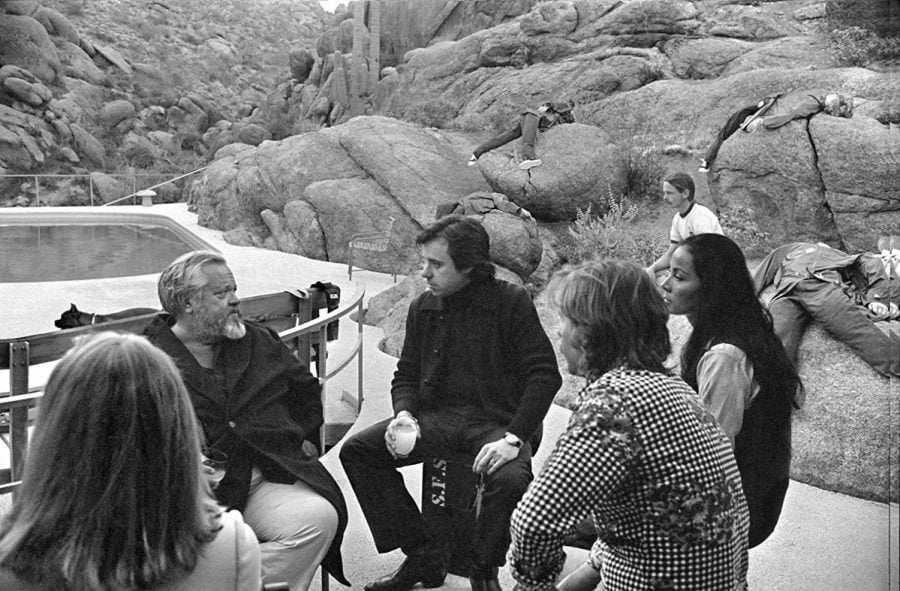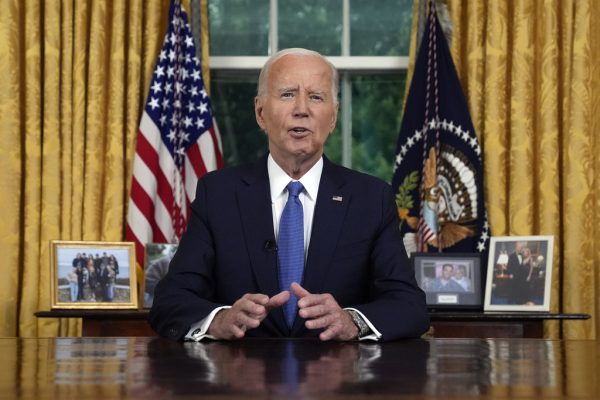Orson Welles cements legacy with final film 40 years in the making
Orson Welles died in 1985, but his final film “The Other Side of the Wind” was just released on Nov. 2. This release is courtesy of Netflix, which is also releasing an accompanying documentary by Morgan Neville “They’ll Love Me When I’m Dead” that details the film’s troubled production. The irony of a streaming service completing the lengthy post-production and release of a lost masterwork is not lost on anyone.
But as producer Filip Jan Rymsza stressed in his introduction of the film at the Chicago International Film Festival (CIFF), this could not have possibly happened if not for Netflix stepping in. So now, we have the concluding chapter to one of Hollywood’s most defining films.
Welles’ final film was initially intended to be his big comeback masterpiece after a long period of Hollywood exile in Europe. Welles is now notorious for being ahead of his time and because of that, he went unappreciated in his time by audiences and studios alike, making it difficult for people to financially back his art.
His final hurrah was self-funded and it faced a long and troubled production from 1969 to 1976. In this production, somewhere around 96 hours of footage was shot. As you probably already guessed, this production was totally chaotic and plagued with troubles from actors leaving, to funding stalling, an unfinished post- production process due troubles with its Iranian producer and the film being locked away by the French judiciary.
Because of this, Welles never got the chance to finish his film. This busy and heartbreaking journey to make the film is detailed fully by first-hand account in Neville’s brilliant documentary and I would not want to rob you of the rewarding viewing experience by breaking it down.
Ever since Welles’ death, filmmakers and film historians have worked effortlessly to finish “The Other Side of the Wind” and to bring closure to one of the greatest artists to ever exist in Hollywood. After decades upon decades of lengthy post-production work and failed deals with producers and distributors, Netflix reached a deal to finish the film and release a documentary alongside. A full post-production crew was hired, consultants were brought on board to make a full film out of the massive amounts of footage and 350-plus pages of script and in due time, the film was finished.
It’s a genuine miracle that we now have this film to view, appreciate, dissect, analyze and cherish. I myself have been lucky enough to see this film twice in theaters (the first at CIFF, the second projected on 35 mm film at the Music Box Theater) and I can confidently say that it is in itself, a profound portrait of cinema history. But it’s also one that is remarkably difficult to pin down and properly discuss.
“The Other Side of the Wind” stars John Huston as Jake Hannaford, a legendary and controversial filmmaker who finds himself in the middle of a production shut down whilst trying to finish his new bizarre erotic experimental film (also titled “The Other Side of the Wind”). The whole narrative is centered around collected faux-documentary footage of his last day alive – his 70th birthday. It culminates into a climactic birthday party thrown by all his bourgeoisie Hollywood friends where they drink to their hearts desire, berate each other and view what there is of Hannaford’s new film.
It’s incredibly meta and a fast-paced erratically edited vision of cinematic anarchy. This is Welles’ view of the changing tide of Hollywood that he felt in the 1970s and 1980s. There are 2,500-plus cuts in this film as it shifts between different aspect ratios, different color schemes, different film stocks and as the narrative shifts from the documentary of Hannaford to his film. It’s a fast, fun, frightening and frequently intimidating experience.
When introducing the film, Rymsza described it as “a bumpy ride.” It’s fitting for this film, which is part of what makes it so weird when put into the context of Welles’ filmography. Welles was a notoriously well-regarded formalist. His work stands as groundbreaking achievements in visual storytelling with displayed and trend- setting mastery over expressive lighting, image depth and powerful camera angles. His narratives are tightly controlled, cohesive and very focused. “The Other Side of the Wind” is none of those things, but it is still groundbreaking.
In Neville’s documentary, there is footage of Welles discussing the film with some of his peers and how it will truly be unlike anything he or anyone else has ever done before. Put in the context of 1969, mockumentaries and found footage films were basically non-existent. It’s a striking example of how Welles always remained a visionary ahead of the curve.
For myself, I saw this as a film about Welles himself. Using the uber-macho Hannaford as a representation of himself wrestling with masculinity. But most broadly it’s a film of Welles dealing with the changing times. A sardonic and nihilistic look at the furious and maniacal end of an era captured with an anxiety-inducing frenzy of the 1970s. I love it and it’s so dense and fast that I can’t wait to keep revisiting it to discover the truths and rewards buried within Welles’ complex images.
I can confidently say that audiences and cinephiles might not have been ready for this when Welles initially intended to release and even still now, I’m not sure we’re ready for it. It’s a radical and paralyzing piece of work and thanks to Netflix, it’s widely available to us now. So see it for yourself and experience a landmark moment in film history.












